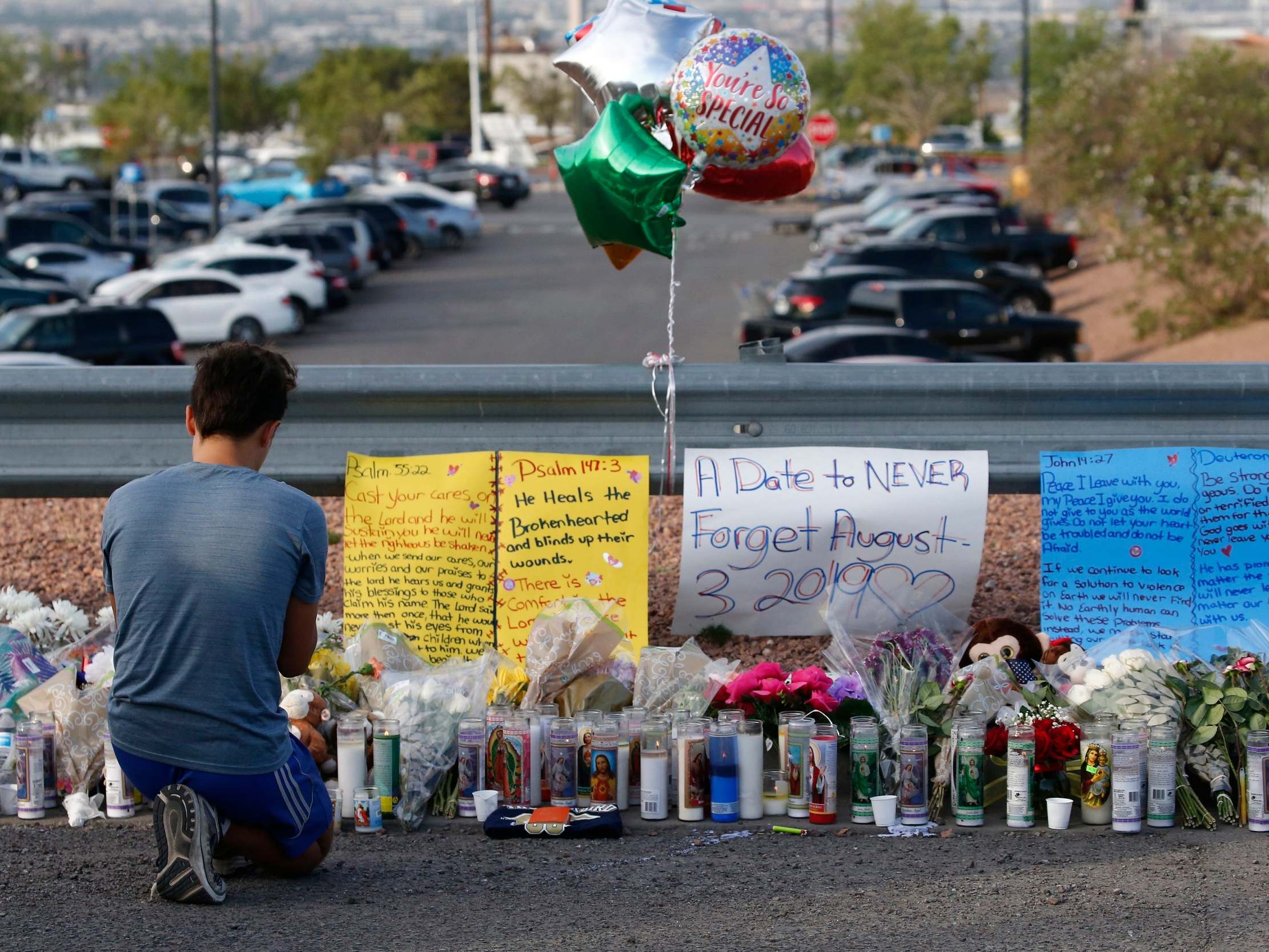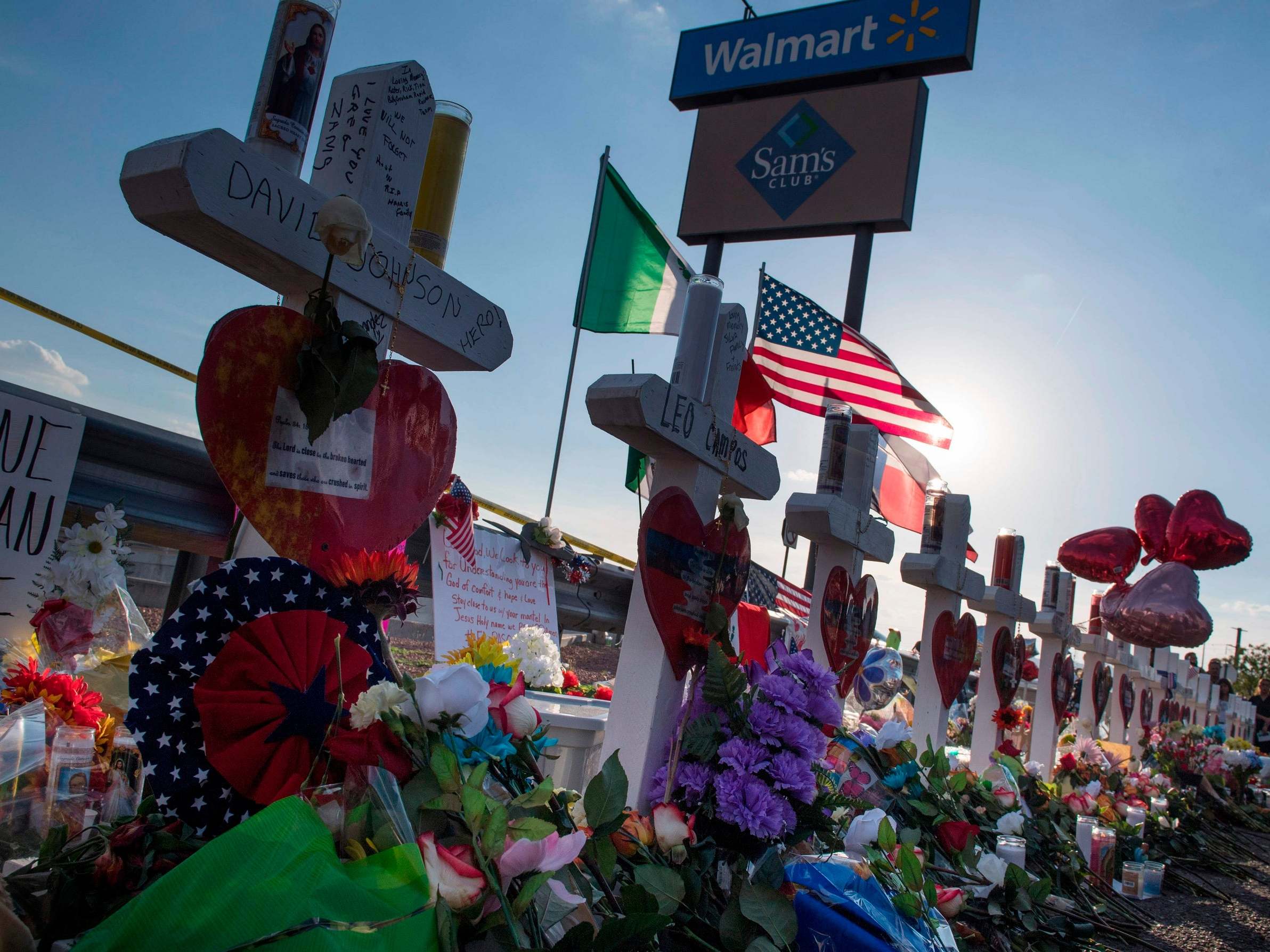Trump campaign has posted 2,000 Facebook ads about ‘invasion’ at Southern border so far this year, amid claims racist rhetoric stoked El Paso shooter
US president has spent an estimated $1.25m on ads about immigration since March
Your support helps us to tell the story
From reproductive rights to climate change to Big Tech, The Independent is on the ground when the story is developing. Whether it's investigating the financials of Elon Musk's pro-Trump PAC or producing our latest documentary, 'The A Word', which shines a light on the American women fighting for reproductive rights, we know how important it is to parse out the facts from the messaging.
At such a critical moment in US history, we need reporters on the ground. Your donation allows us to keep sending journalists to speak to both sides of the story.
The Independent is trusted by Americans across the entire political spectrum. And unlike many other quality news outlets, we choose not to lock Americans out of our reporting and analysis with paywalls. We believe quality journalism should be available to everyone, paid for by those who can afford it.
Your support makes all the difference.Donald Trump’s re-election campaign has harnessed Facebook advertising to push the idea of an “invasion” at the southern border, amplifying the fear-inducing language about immigrants that he has also voiced at campaign rallies and on Twitter.
Since January, the US president’s re-election campaign has posted more than 2,000 ads on Facebook that include the word “invasion” — part of a barrage of advertising focused on immigration, a dominant theme of his re-election messaging.
A review of Mr Trump’s tweets also found repeated references to an “invasion,” while his 2016 campaign advertising heavily featured dark warnings about immigrants breaching America’s borders.
Mr Trump’s language on immigration — particularly his use of the word “invasion” — is under scrutiny after the mass shooting in El Paso, Texas, on Saturday.
The suspect in that shooting, which left 22 people dead, appeared to be the author of a manifesto declaring that “this attack is a response to the Hispanic invasion of Texas.”
Divisive and often false claims about unauthorised immigrants have been a cornerstone of Mr Trump’s political strategy for years, from the “build the wall” chants at his 2016 campaign rallies to his warnings about a migrant caravan before the 2018 midterm elections.
In his re-election campaign, Mr Trump has spent an estimated $1.25m (£1m) on Facebook ads about immigration since late March, according to data from Bully Pulpit Interactive, a Democratic communications firm that is tracking the digital political advertising of presidential candidates.
Those ads represent a significant portion of the roughly $5.6m (£4.6m) that Trump has spent on Facebook advertising during that period.
Most of the “invasion” ads began running between January and March, though a few dozen began running in May. Many of the ads began with a blunt message — “We have an INVASION!” — and went on to say, “It’s CRITICAL that we STOP THE INVASION.”
Mr Trump’s campaign, like other advertisers, runs many different Facebook ads using text or visuals that vary. Ads with the word “invasion” make up a small portion of the ads the Trump campaign has run on Facebook this year.
Facebook’s archive of political ads, which dates back to May 2018, says it contains more than 240,000 Trump ads.
There is no evidence that Mr Trump’s Facebook ads directly influenced the author of the manifesto, who wrote that his views “predate Trump” and posted the document on 8chan, an online forum known as a haven for extremists.
But Mr Trump, through his speeches, tweets and campaign ads, has elevated the idea of an “invasion,” once a fringe view often espoused by white nationalists, into the public discourse.
Some other Republican candidates have echoed Mr Trump’s language in their own ads.
“Let’s call this what it is — an invasion of our country,” read a recent Facebook ad for Tommy Tuberville, a former Auburn football coach who is running for Senate in Alabama.

Other Republicans who have used the word “invasion” in Facebook ads include a candidate for governor in West Virginia and a candidate for Senate in North Carolina.
Cognitive linguist George Lakoff said the word “invasion” was a potent one for Mr Trump to use because of what it allowed him to communicate.
“If you’re invaded, you’re invaded by an enemy,” he said. “An invasion says that you can be taken over inside your own country and harmed, and that you can be ruled by people from the outside.”
Mr Lakoff added: “When he’s saying ‘invasion,’ he’s saying all of those things. But they’re unconscious. They’re automatic. They’re built into the word ‘invasion’.”
For the writer of the manifesto, the concept of an “invasion” had an additional, racist meaning: He promoted a conspiracy theory called “the great replacement,” which claims that an effort is underway to replace white people with nonwhite people.
Democratic candidates for president blamed Mr Trump for helping spread such views.
“White supremacy is not a mental illness,” Elizabeth Warren, senator of Massachusetts, said on Monday. “We need to call it what it is: Domestic terrorism. And we need to call out Donald Trump for amplifying these deadly ideologies.”
But radio host Rush Limbaugh attacked Democrats and the news media on Monday for pointing the finger at conservatives like him.
“We’re sick and tired, every time this happens, people that we believe in being blamed for it,” he said. “We’re sick of it. None of us pulled the trigger, none of us want these things to happen, and yet we turn on the media and that’s what we hear.”

Stoking fear about immigrants has been central to the Trump campaign’s advertising strategy since it first began airing political commercials during the 2016 race.
The campaign’s first ad of that election focused on “radical Islamic terrorism” in the wake of the mass shooting in San Bernardino, California, and showed footage of people seemingly flooding across a border. (The footage was from Morocco, not the United States.)
Mr Trump also proposed a “total and complete shutdown of Muslims entering the United States” after the attack.
Scenes evoking illegal immigration became common during the 2016 effort, and Mr Trump painted a picture of an America overwhelmed by immigrants.
“We don’t have a country right now,” he said in footage shown in one ad. “We have people pouring in, they’re pouring in, and they’re doing tremendous damage.”
The use of alarmist language and imagery about immigrants has a history in the modern Republican Party that dates back to the divisive political battles over illegal immigration in the 1990s.
One of the most infamous depictions of migrants as a threat came from a 1994 ad from Pete Wilson, governor of California, that showed a group of people rushing through a border crossing. “They keep coming,” the announcer said.
Since then, images of shadowy figures climbing fences or prowling around in the dark have been a staple of Republican campaign ads, often used by candidates whose districts and states are far from any border.
In 2014, for example, Pat Roberts, senator of Kansas, ran an ad that was typical of the Republican messaging at the time, warning of “a border crisis” that was “taking jobs away from Kansans”.
Mr Trump’s takeover of the party gave those kinds of messages a higher platform and a larger mouthpiece as conservative media outlets like Fox News amplified his words.
He seized on the “invasion” imagery in the run-up to the 2018 midterm elections, when he claimed without evidence that a caravan of migrants making its way north towards the border had been infiltrated by “criminals and unknown Middle Easterners”.
The president and fellow Republicans warned of waves of violence, drugs and crime that awaited the country if it were led by Democrats, who were portrayed as supporting policies that would weaken national security. That effort did not have the desired effect, as Republicans lost control of the House.
Customs and Border Protection recorded more than 144,000 arrests at the southwestern border in May, the highest monthly total in 13 years. Arrests declined by 28 per cent in June and were expected to continue to fall through July, according to officials in the Department of Homeland Security.
The estimated $1.25m (£1m) that the Trump campaign has spent on immigration ads on Facebook since late March is a significant sum when compared with the amount of money the Democratic presidential candidates are spending on Facebook ads. The spending figures include both Facebook and Instagram.
Over the same period, no Democratic candidate spent more than $2.1m (£1.7m) on Facebook ads, according to Bully Pulpit; only Kirsten Gillibrand, senator of New York, and former Joe Biden, the former vice president, topped $2m (£1.6m) through Saturday.
Mr Trump’s spending on immigration ads exceeded the entirety of what one of the best-funded Democrats — Kamala Harris, senator of California — spent on Facebook during that period.
The New York Times

Join our commenting forum
Join thought-provoking conversations, follow other Independent readers and see their replies
Comments